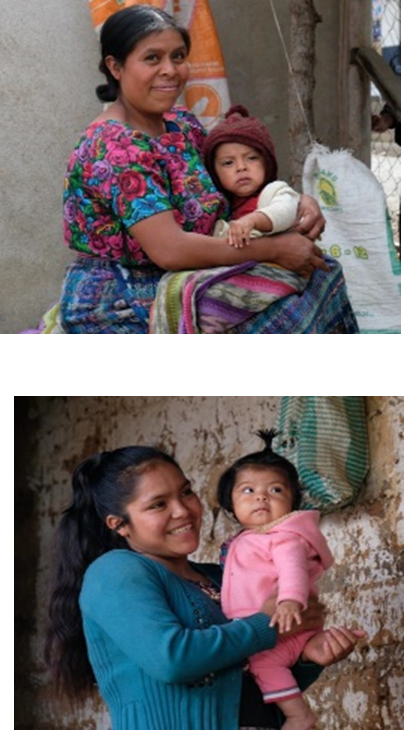 Christmas is a dramatic birth story that takes place in the humblest of places-a stable! More than 2000 years later the circumstances for tens of thousands of women around the world have not changed, they are forced to deliver without skilled help, and in unsafe and unhygienic conditions. As a Retired R.N, Midwife (SCM) and Lactation Consultant, WICC Board member Win Czum is passionate about maternal care around the world and supporting women affected by injustice.
Christmas is a dramatic birth story that takes place in the humblest of places-a stable! More than 2000 years later the circumstances for tens of thousands of women around the world have not changed, they are forced to deliver without skilled help, and in unsafe and unhygienic conditions. As a Retired R.N, Midwife (SCM) and Lactation Consultant, WICC Board member Win Czum is passionate about maternal care around the world and supporting women affected by injustice.
Lifetime risk of maternal death in Canada is 1 in 11,000, in Ethiopia it is 1 in 27 while in Niger it is a shocking 1 in 7 (Standing Committee – Status of Women). 830 women die each day of pregnancy and childbirth related complications, most of which are preventable (WHO).
What is Maternal Health? The World Health Organization says “Maternal health refers to the health of women during pregnancy, childbirth and postpartum period”. Many people think it means “Maternal Healthcare”. While essential, this does not define Maternal health. Maternal health means more. It is an umbrella term that covers personal and physical factors, social, cultural and spiritual issues, health conditions, policies, practises and collective circumstances in a women’s life and body that enable her to emerge from her pregnancy and childbirth thriving.
Causes of death in pregnancy and childbirth
- Lack of trained birth attendants, inadequate pre and post natal care. Almost 1 in 5 women give birth without assistance from a skilled health provider.
- Severe bleeding – mostly after childbirth. This is treatable with a medication that costs less than 50 cents, but it is not available, or affordable in many countries.
- Infections, such as malaria, or related to heart disease or diabetes, treatable with access to medication.
- Hypertension (high blood pressure) especially during pregnancy
- Complications from delivery or trauma
- Transportation delays, or none, getting to birthing facility.
- In 95% of cases, death is preventable.
How can women’s lives be saved?
- Provide high quality care in pregnancy and childbirth.
- Trained health professionals available
- Timely management of complications
- Awareness: teenage girls 12-18 at much higher risk of dying during pregnancy and childbirth. (WHO)
What prevents women from getting the care they need?
- Poor women in remote area in the world are least likely to receive adequate care. There are few skilled health workers in these areas.
- Distance and transportation to birthing facilities.
- Lack of education, information
- Inadequate and poor-quality services
- Cultural beliefs and practises
Some troubling Stats: The highest maternal Mortality rates are in the Sub Saharan Africa and South Asia. 32,000 women die each year in East Africa (UNICEF) compared to Canada where there are 10 deaths per 100,000 live births.
Steps that are being taken to reduce the Mortality and Morbidity rates.
- Sustainable development goals Countries have united behind a new target to accelerate the decline of maternal Mortality by 2030
- Improving Maternal health is one of WHO’s key priorities.
- Invest in education and training, Midwives, Nurses, Birth attendants, to provide evidence based care.
- Pre and Post Natal education; warning signs during pregnancy and childbirth, addressing mental health issues, drug use,
- Provide money to developing countries to help fund health care education.
There are developing countries in the world who have education programs. A Masters in Public Health leadership training programs under the leadership of “Save The Mothers” a Canadian charity, is offered at Christian University of Uganda and was established by Canadian Obstetrician Dr Jean Chamberlain. They now welcome students from E. Africa, Tanzania, S. Sudan, Nigeria, Rwanda, and Malawi. www.savethemothers.org
The Good new is, between 1990 and 2015 Maternal deaths have decreased by 44% and continue to decline. A 2021/2022 World Day of Prayer Grant helped with this change. The Midwife Training Program provided 41 midwives in rural Guatemala with the skills and tools needed to be able to effectively manage high-risk pregnancies. 131 pregnant women were referred to a health care centre by midwives in Chimaltenango.
Photo source for this article: Partnership between International Needs Canada, UNAPER, and Rotary International; WDP 2022 Grant – Guatemala – Midwife Training Program
Submitted by Win Czum, Retired R.N, Midwife (SCM) and Lactation Consultant and United Church Women’s appointee the WICC Board.
References:
World Health Organization – https://www.who.int/europe/news-room/fact-sheets/item/maternal-mortality#:~:text=A%20woman’s%20lifetime%20risk%20of,45%20in%20low%2Dincome%20countries; https://www.who.int/news-room/fact-sheets/detail/maternal-mortality;
Standing Committee – Status of Women – https://www.ourcommons.ca/Content/Committee/403/FEWO/Reports/RP4622496/feworp02/feworp02-e.pdf

